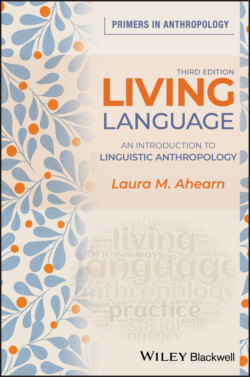Читать книгу Living Language - Laura M. Ahearn - Страница 16
Example 2: Losing a Language in Papua New Guinea
ОглавлениеIn 1987, the residents of the tiny village of Gapun in Papua New Guinea (a country north of Australia) were some of the last speakers of a language called Taiap, which at the time had at, most, 89 remaining speakers.2 Adult villagers were almost all bilingual in Taiap and in Tok Pisin, one of the three national languages of Papua New Guinea, and all children were exposed to rich amounts of both Taiap and Tok Pisin in their early years. By 1987, however, no child under the age of ten actively spoke Taiap, and many under the age of eight did not even possess a good passive knowledge of the language. The usual theories about how and why so many of the world’s languages are becoming extinct did not seem to apply to Taiap. Material and economic factors such as industrialization and urbanization were not sufficiently important in the remote village of Gapun to explain the language shift away from Taiap. Why, then, was Taiap becoming extinct? According to linguistic anthropologist Don Kulick, the adults in Gapun claimed that the shift was occurring because of the actions of their (often preverbal) children. Kulick writes: “‘We haven’t done anything,’ one village man explained when I asked him why village children don’t speak the vernacular, ‘We try to get them to speak it, we want them to. But they won’t … They’re bikhed [big-headed, strong-willed]’” (Kulick 1992:16).
